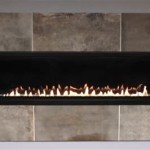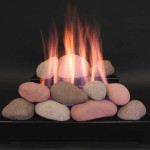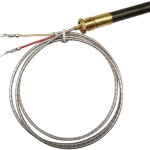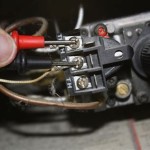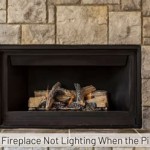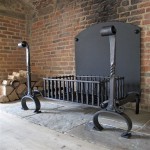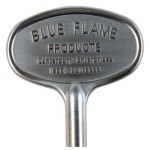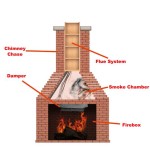Replacing A Fireplace: A Comprehensive Guide
Replacing a fireplace is a significant home renovation project that can enhance a property's aesthetic appeal, improve energy efficiency, and even increase its market value. This process involves more than simply removing an old fireplace and installing a new one; it requires careful planning, adherence to safety regulations, and a thorough understanding of available options. This article provides a detailed overview of the essential aspects to consider when replacing a fireplace.
Assessing the Existing Fireplace and Chimney
Before embarking on a fireplace replacement, a comprehensive assessment of the existing structure is crucial. This evaluation should encompass both the fireplace itself and the connected chimney. A professional inspection can identify any structural issues, such as cracks, crumbling mortar, or blockages within the chimney. These problems must be addressed before installing a new fireplace to ensure safe and efficient operation. Ignoring pre-existing damage can lead to hazardous conditions, including carbon monoxide leaks or chimney fires.
This assessment should also determine the type of fireplace currently in place. Common types include wood-burning fireplaces, gas fireplaces, and electric fireplaces. Understanding the existing fuel source and venting system is critical for selecting a suitable replacement. Switching from a wood-burning fireplace to a gas or electric model, for instance, necessitates different venting requirements and may involve additional modifications to the home's infrastructure.
Evaluating the fireplace's dimensions and the surrounding space is equally important. These measurements will dictate the size and style of the new fireplace that can be accommodated. Factors such as hearth size, mantel design, and proximity to combustible materials must be considered to comply with building codes and safety standards.
Choosing a Replacement Fireplace
Selecting the right replacement fireplace involves careful consideration of several factors, including fuel type, style, efficiency, and budget. Each type of fireplace offers distinct advantages and disadvantages. Wood-burning fireplaces provide a traditional ambiance and heat source, but they require a regular supply of wood and demand more maintenance. Gas fireplaces are more convenient, offering instant heat and adjustable flames, but they typically require a gas line connection. Electric fireplaces are the easiest to install, requiring only an electrical outlet, and offer a variety of aesthetic options, but their heating capacity may be limited compared to other types.
Beyond fuel type, the aesthetic design of the fireplace is a crucial consideration. Fireplaces can be selected to complement the existing décor of the room or to serve as a focal point. Options range from classic brick or stone fireplaces to modern, minimalist designs. Inserts can be installed into existing fireplace openings or free-standing units can be selected.
Energy efficiency is another vital factor. Modern fireplaces are designed to maximize heat output while minimizing energy consumption. Features such as sealed combustion chambers, adjustable thermostats, and remote controls can contribute to energy savings. Researching Energy Star-rated models and comparing efficiency ratings can help homeowners make informed decisions.
The Installation Process and Safety Considerations
The installation of a new fireplace should adhere to local building codes and safety regulations. It is often advisable to hire a qualified professional for this task, particularly when dealing with gas lines or complex venting systems. Improper installation can lead to dangerous situations, including gas leaks, carbon monoxide poisoning, or fires.
Prior to installation, all necessary permits should be obtained. Local building codes often dictate specific requirements for fireplace placement, venting, and safety features. Failure to comply with these regulations can result in fines or delays.
The installation process itself typically involves removing the old fireplace, preparing the surrounding space, installing the new unit, and connecting it to the appropriate fuel source and venting system. Proper sealing and insulation are essential to prevent heat loss and ensure optimal performance. For gas fireplaces, a qualified technician should perform a leak test to verify the integrity of the gas line connections.
Following installation, a thorough inspection should be conducted to ensure that the fireplace is operating safely and efficiently. This inspection should include checking for gas leaks, verifying proper venting, and testing the functionality of all controls and safety features. Homeowners should also familiarize themselves with the fireplace's operating instructions and maintenance requirements.
Regular maintenance is essential for extending the lifespan of a fireplace and ensuring its safe operation. This includes cleaning the firebox, inspecting the chimney for obstructions, and scheduling professional inspections as needed. Proper maintenance practices can help prevent costly repairs and ensure that the fireplace continues to provide warmth and enjoyment for years to come.

Replacing Your Condo Fireplace Vancouver Gas Fireplaces

Fireplace Makeovers On A Budget Direct Fireplaces
-small.gif?strip=all)
How To Replace Your Old Open Fire With A New Efficient Gas Fireplace

How To Remove A Fireplace Surround Direct Fireplaces

Fireplace Repair Rebuilding Company Chimney Masonry Service

Time To Replace Wood Burning Prefab Fireplace Greenville Sc Blue Sky

Fireplace Fix Easy Tips To Renovate Retrofit And Replace An Old Fire Touchstone Home S Inc

Replacing A Gas Fireplace With Real Wood Buringing One Hometalk

Fireplace Update Before Afters Luce S Chimney Stove

Replacing A Gas Fire With Wood Burner

